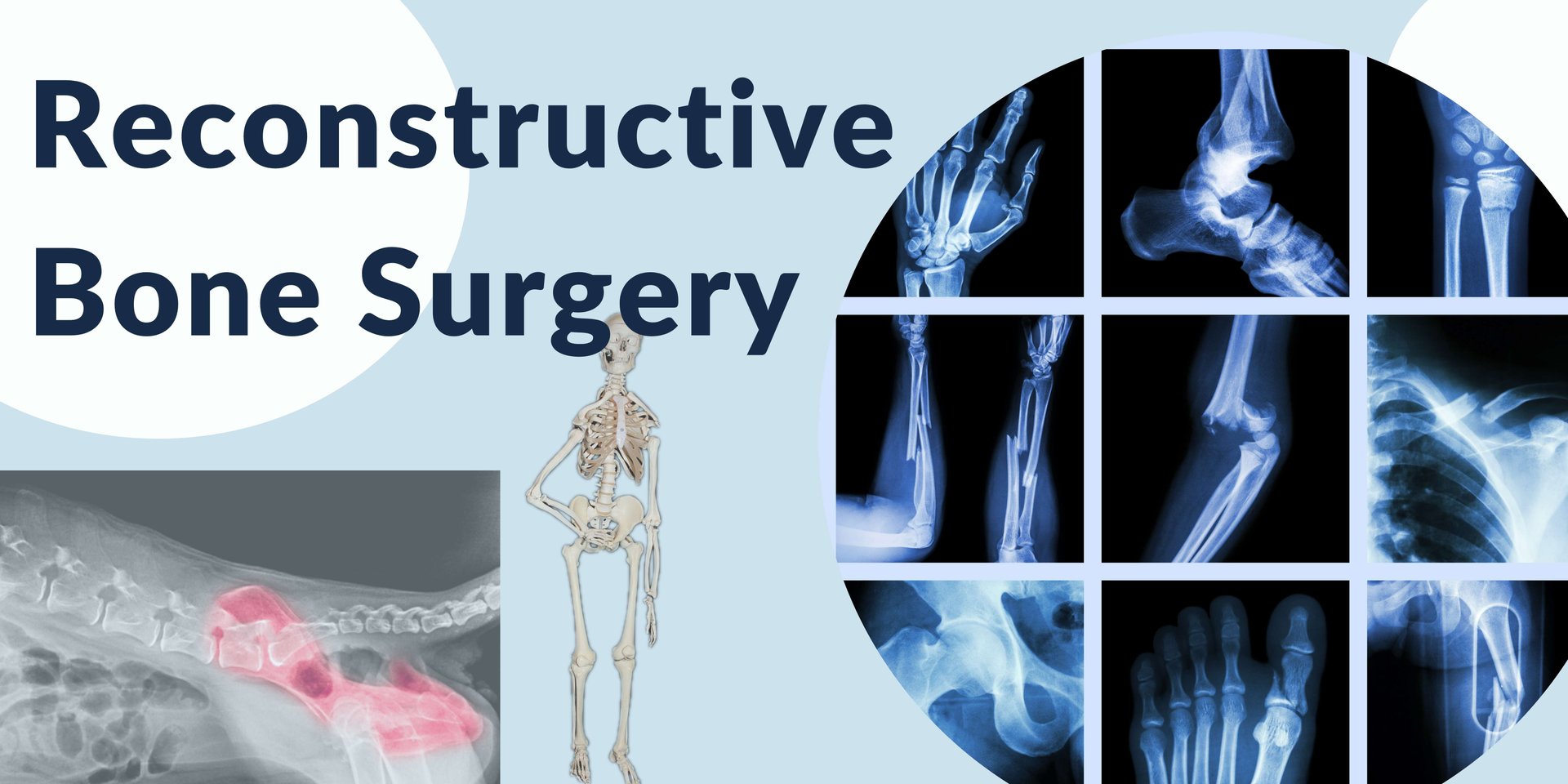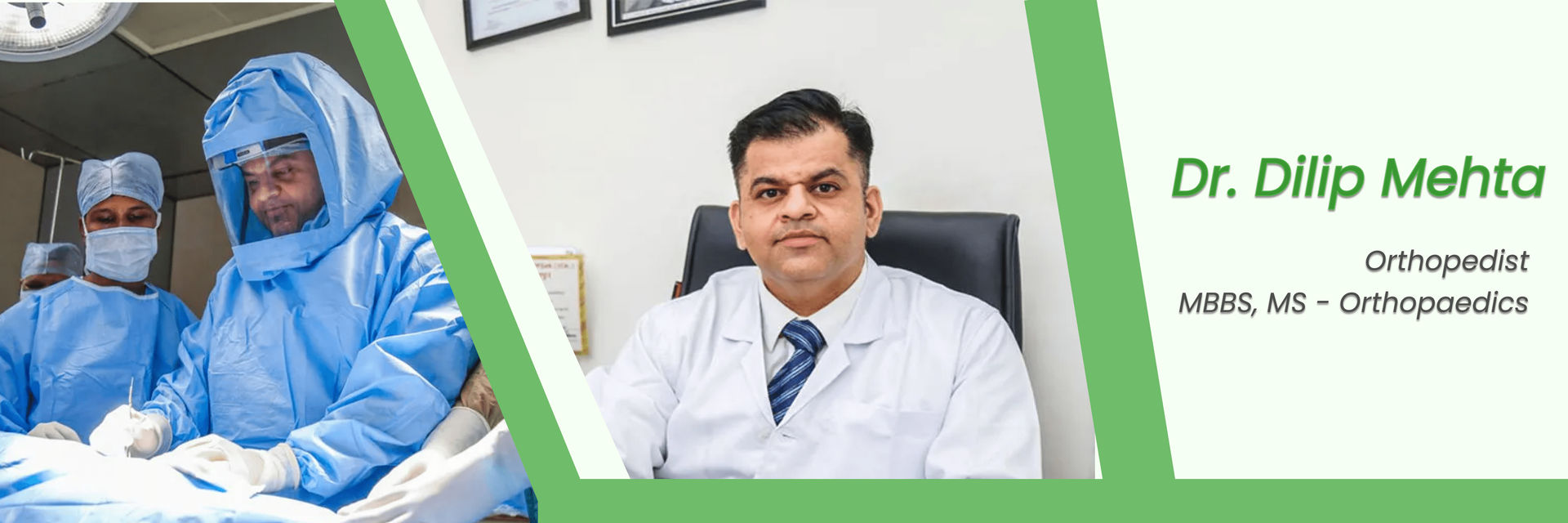Overview
Reconstructive bone surgery is a unique discipline. It concentrates on repairing and rebuilding broken bones.
Witness the miracle as accomplished surgeons fix damaged bones, giving people in need strength and mobility.
Your well-being is our priority - call us to book your appointment today.
What is bone reconstruction surgery?
Bone tissue that has been injured or becomes ill can be repaired and rebuilt via a surgical process called bone reconstruction. To improve the patient's mobility and quality of life, the operation is done.
Explore the many causes—from fractures to deformities—that prompt people to choose this life-altering treatment.
Your well-being is our priority - call us to book your appointment today.
What are the reasons for undergoing bone reconstruction surgery?
Surgery for bone repair may be done for a number of reasons, including:
Reason | Detail |
Fractures | Surgical intervention may be necessary to straighten and stabilize the bones in severe fractures that do not heal effectively with nonsurgical therapy. |
Bone Deformities | Reconstructive surgery may be required to repair the shape and alignment of the bone in cases of congenital deformities, developmental anomalies, or acquired deformities brought on by trauma or disease. |
Bone Tumors | Depending on whether the tumors are cancerous or benign, surgery may be required to remove them. After removing a tumor, reconstruction is frequently done to preserve the bone's integrity. |
Joint Disorders | To replace worn-out or injured joints with artificial implants and restore joint function, conditions like arthritis or joint degeneration may call for joint replacement surgery. |
Osteonecrosis | Reconstructive surgery may be used to remove the diseased bone and replace it with healthy bone or joint components when blood flow to a bone is disturbed, resulting in bone death. |
Nonunion or Malunion of Fractures | Surgery may be necessary to realign and stabilize the bone for appropriate healing in situations when a broken bone fails to mend (nonunion) or heals in the wrong position (malunion). |
Limb Length Discrepancy | Reconstructive surgery, comprising bone lengthening or shortening operations, may be used to rectify significant discrepancies in the length of the limbs. |
Discover the complex procedures used in the operating room to precisely and expertly replace and restructure bones.
How is bone reconstruction surgery performed?
Surgery for bone repair is a complicated process that varies based on the particular problem being addressed. But the typical procedures in bone repair surgery are as follows:
Preoperative Planning:
The doctor will review the patient's medical background, do diagnostic procedures (such as X-rays, CT scans, or MRI scans), and create a unique surgical plan.
Anesthesia:
To make sure the patient is relaxed and pain-free throughout the treatment, anesthesia will be given. The particular process and the patient's demands will determine the kind of anesthesia (general or regional).
Incision:
To reach the injured bone or joint, the surgeon will create an incision at the operative site.
Bone Preparation:
If bone grafting is necessary, the surgeon may use donor bone (allograft) or bone taken from another part of the patient's body. For grafting, the collected bone or bone replacement material is prepared and shaped.
Bone Reshaping/Realignment:
To maintain appropriate alignment and stability in situations of bone changes or fractures. The surgeon will reshape or realign the bone using surgical tools, screws, plates, rods, or other fixation devices.
Bone Grafting:
If bone grafting is required, the ready graft material is put into the injured region to aid in bone healing, fusion, or augmentation.
Joint Replacement:
Omit joint reconstruction, diseased or injured joints may be replaced with prosthetic joints. Which is composed of ceramic, plastic, or metal.
Closure:
The surgical site is covered with sterile dressings after the incision is stitched or stapled shut.
Postoperative Care:
After being watched in the recovery area. The patient is either sent to a hospital room or released for outpatient treatment. The postoperative treatment program will include
- pain management,
- physical therapy,
- and follow-up sessions to promote recovery and rehabilitation.
It's crucial to keep in mind that the specifics of bone reconstruction surgery might change based on the
- patient's health,
- the bone's location,
- and the surgeon's level of experience.
Investigate the healing process following bone restoration surgery to find a way to recover and reclaim your life.
Take the first step to recovery. Get in touch with us for your treatment.
What is the recovery process like after bone reconstruction surgery?
The length and kind of the operation, as well as individual characteristics, can all affect how long it takes to recuperate following bone reconstruction surgery. Yet, the following are some broad characteristics of the healing process:
Hospital Stay:
The complexity of the operation and the patient's general condition will determine how long they need to stay in the hospital. While some operations could only need a brief stay, others can need more time to watch and care.
Pain control:
Prescribed painkillers will be given to treat postoperative discomfort. It's crucial to follow the drug instructions and let the medical staff know how much pain you're experiencing.
Physical Therapy:
Following bone repair surgery, healing requires both rehabilitation and physical therapy. You will be led through exercises and activities by a physical therapist.
Restricted Activities:
During the initial phase of treatment, your surgeon will give you detailed instructions. on weight-bearing, mobility restrictions, and limitations on certain activities. It's crucial to adhere to these guidelines to safeguard the repair of bone and encourage effective recovery.
Wound Care:
To prevent infection and encourage healing, proper wound care is crucial. You may need to change dressings often and will be given information on how to keep the surgery site clean.
Follow-Up Appointments:
Your surgeon will schedule routine follow-up appointments with you to keep tabs on your development. check your healing, and make any needed changes to your treatment plan.
Gradual Return to Regular Activities:
Your surgeon will tell you on resuming regular activities as you recover and get strength. This might entail range-of-motion exercises, a gradual return to normal activities, and an increase in weight-bearing.
It's crucial to remember that the period of recovery might vary depending on the patient and the precise procedure done.
By shedding light on the potential difficulties along this transforming journey, you may make well-informed judgments and take careful care.
What are the potential risks and complications of bone reconstruction surgery?
Like any surgical technique, bone reconstruction surgery has possible dangers and side effects. The list below illustrates some of the potential dangers:
Infection:
Surgical site infections can happen and may need to be treated with drugs and further surgeries.
Bleeding:
Excessive bleeding during or following surgery may call for further treatment. including a blood transfusion or exploratory surgery to stop the bleeding.
Damage to Nerves or Blood Vessels:
Numbness, weakness, or circulation issues might result from nerve or blood vessel damage close to the surgery site.
Non-union or Delayed Healing:
In some instances, bones might heal (nonunion) or take longer than intended to heal (delayed healing). They need extra therapies such as bone stimulation or revision surgery.
Implant-related Issues:
More surgical intervention may be necessary. If complications with the implants utilized in the reconstructive procedure such as implant failure, fracture, or implant loosening, occur.
Poor Wound Healing:
Some people may suffer poor wound healing, which may cause wound care and even a revision operation.
Allergic reactions:
Rarely, patients can have allergic reactions to surgical supplies such as implants or bone transplants.
Complications of anesthesia:
Undergoing general or regional anesthesia has its own set of hazards. such as allergic responses, breathing issues, and unpleasant reactions.
Take advantage of physical therapy's advantages to strengthen your body and speed up your recovery after surgery.
Will you need to undergo physical therapy before bone reconstruction surgery?
Depending on the exact issue being treated and the advice of your healthcare professional, physical therapy may or may not be required before your bone reconstruction surgery.
Preoperative physical therapy may be helpful to improve your physical condition. and get your body ready for the coming operation. Physical therapy before surgery tries to increase:
- the injured area's strength,
- flexibility,
- and range of motion, which may improve surgical results and postoperative recovery.
- Physical therapy before surgery could be suggested if the afflicted area has weak or tight muscles, which might compromise the operation or recuperation.
- Before surgery, preoperative rehabilitation can assist in controlling pain, edema, or inflammation.
- According to doctors, having greater physical fitness before surgery may lead to better postoperative results.
- The choice to pursue preoperative physical therapy will be based on your unique situation. and the advice of your healthcare professional. They will test your health and decide whether prior physical therapy is useful or essential for you.
Learn about the inspiring tales of victory and recovery as lives are altered by the power of bone repair surgery.
How successful is bone reconstruction surgery?
In general, bone reconstruction surgery has a high success rate in restoring patients' functioning, lowering their level of discomfort, and increasing their quality of life.
- The exact illness being treated,
- the severity of the damage or injury,
- the patient's general health and the surgical team's experience can all affect the success rate of bone reconstruction surgery.
The efficiency of bone repair surgery is evaluated by the following variables:
Bone Healing:
The main goal of surgery for bone repair is to encourage healthy bone healing. The capacity of the bone to heal and restore its strength and stability determines the surgical procedure's success.
Bone repair surgery tries to reduce pain brought on by fractures, deformities, or other diseases. Surgery that is successful should cause a considerable decrease in discomfort or total pain relief.
Functional Improvement:
Bone reconstruction surgery seeks to improve or restore the afflicted bone's or joint's functionality. Improved mobility, range of motion, and general functioning should follow a successful procedure.
Patient happiness:
A key indicator of surgical success is the patient's happiness with the procedure's results. The capacity to do everyday tasks again,
- an improvement in quality of life,
- and satisfying the patient's expectations all play a role in contentment.
It's vital to remember that specifics connected to the patient's health and the surgery carried out may affect individual results and success rates.
Take charge of your health with the best treatment. Book your consultation now.
References:







